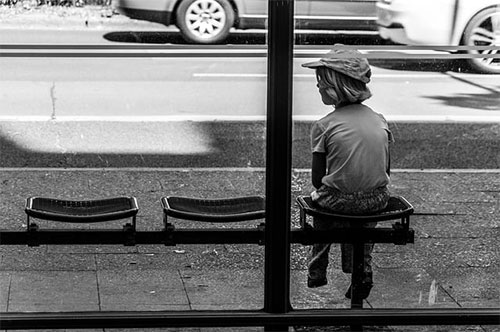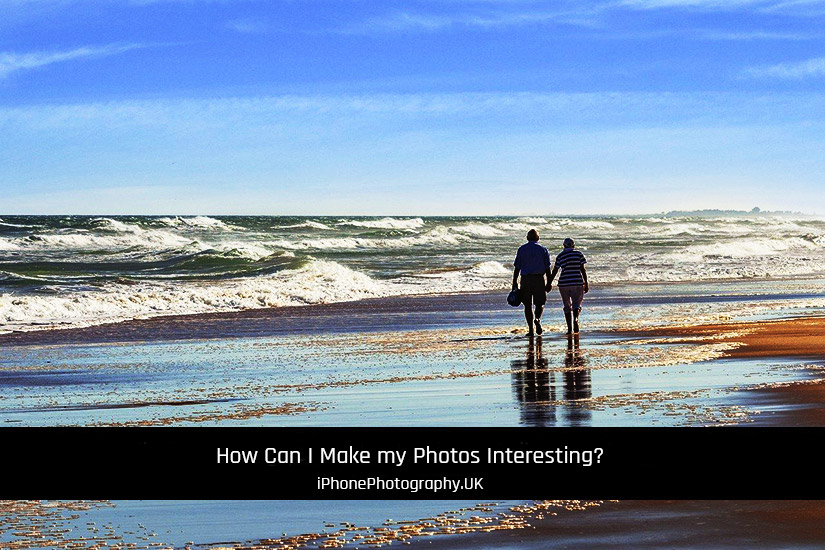My photos look boring
We’ve all been there. We all want to make our photos interesting.
No matter how great your subject looks to your human eyes, sometimes it doesn’t transfer when it’s viewed by your camera’s ‘eyes’.
As humans, we’ve got an amazing ability to see the greatness of things we experience in real life. Unfortunately, a 2D image can struggle to define that experience to someone who ‘wasn’t there’.
It’s worth remembering though, that some photographs can easily work without any additional help.
It might be an amazing desert vista, or a stunning sunset from a Caribbean island, etc. The beauty of the image itself can be enough to make it memorable.
But, what if it’s not?
What’s the answer?
Well, the two most common ways to make a photo more interesting, are to…
- leave the viewer asking questions.
- invoke some emotion.
Let’s look at an example.

In the image above, photographer Wal_172619, has met both of the criteria for an interesting photo.
As a viewer, you feel emotion when you look at it. And it leaves you asking questions.
It seems very simple, but in practice it can be much more difficult. So, let’s look at each one in turn and discuss some different ideas.
Make photos interesting by invoking questions
Any time you can leave the viewer asking questions about your image, it’s level of interest goes up exponentially.
Using the above image as a guide, some examples of questions are;
- How has this happened?
- Where are his parents?
- Is he lost?
- Has he decided to leave home?
- Is he going to be safe?
- Where has he come from, or where is he going, etc.
Make photos interesting using an emotion
With emotion, how does this image make you feel?
Do you feel worried for him? Are you concerned for his welfare? Do you feel happy, that someone so young, is mature enough to make his own decisions?
Maybe it brings back memories from your own childhood, or maybe of stories you were told when you were younger?

The technique of making photos interesting
Now you’ve got an idea about how to make your photos interesting, it’s time to put it into practice. But, how exactly do you do that?
I find the easiest way is to start by asking myself, “What do I want this image to say?”. “What story am I trying to tell?”.
Telling a story through your photographs is a powerful way to help the viewer engage with your images.
To get you started, here are some tips to help you tell a story in your photographs:
– Decide on a central theme, or concept that you want to convey in your photos. It could be a specific emotion, a narrative, or a particular idea.
– Determine the key moments, or scenes you want to capture that’ll represent your story.
– Consider a sequence of photos to create a visual narrative.
– Capture elements that’ll help tell your story. eg, people, objects, or locations that are relevant to your theme.
– Look for details, expressions, or interactions that evoke emotions, or convey your message.
– Use composition techniques to guide the viewer’s eye and enhance the storytelling aspect of your photos. eg, leading lines, symmetry, or framing techniques that will add depth and interest to your images.
– Explore different angles and perspectives to capture your story from various viewpoints.
– Get close-ups for details and emotions, or step back for wide-angle shots to provide context.
– Use lighting and colours to set the mood and enhance the atmosphere of your story.
– Experiment with natural light, shadows, or artificial lighting to create the desired effect.
– Look for candid moments and genuine emotions that can bring your story to life.
– Be patient and observant, ready to capture those decisive moments that reveal the essence of your story.
Final thoughts
Remember that storytelling in photography is subjective, and your interpretation of a story may differ from the story that others see. But, that’s okay.
Be creative, experiment, and let your personal vision shine through your images.
Also, remember that practice is the key to improving your photography skills. Experiment with these techniques, explore your surroundings, and have fun capturing unique moments with your smartphone!
Got a question, or is there something I missed? Let me know in the comments below 🙂
Steve

